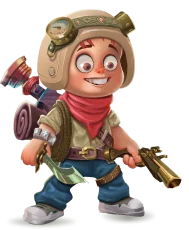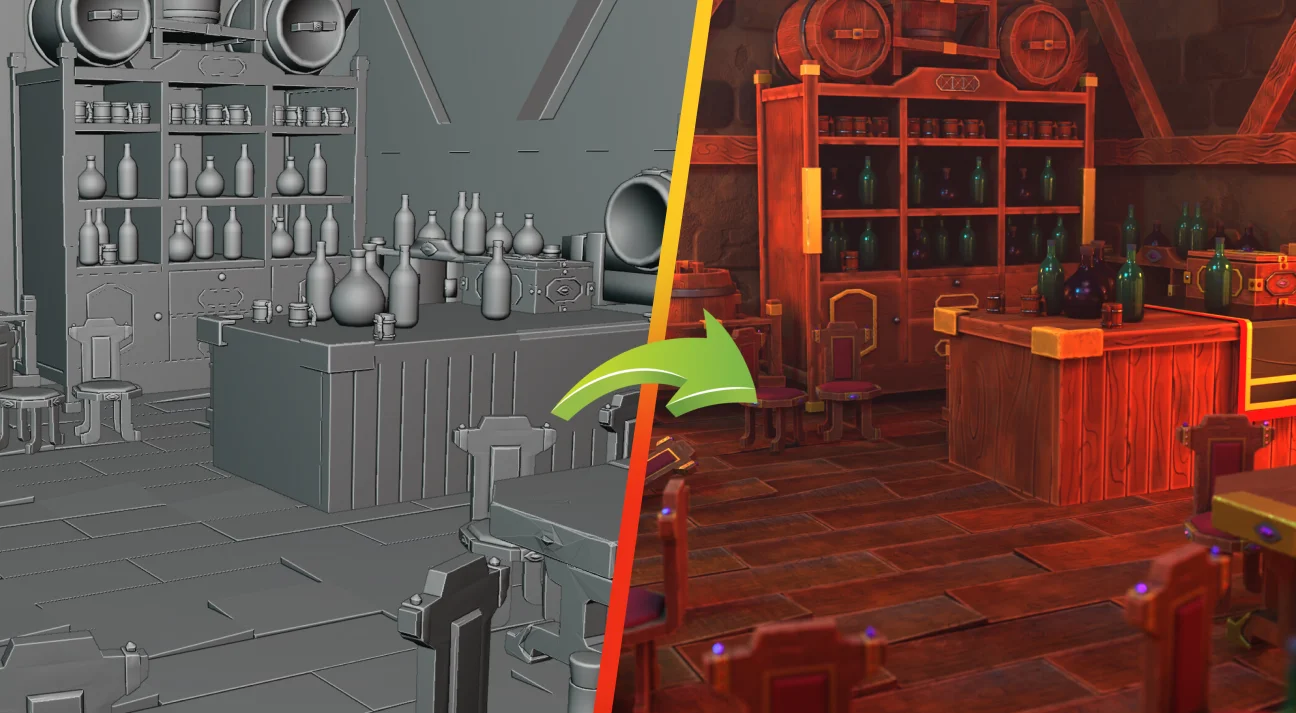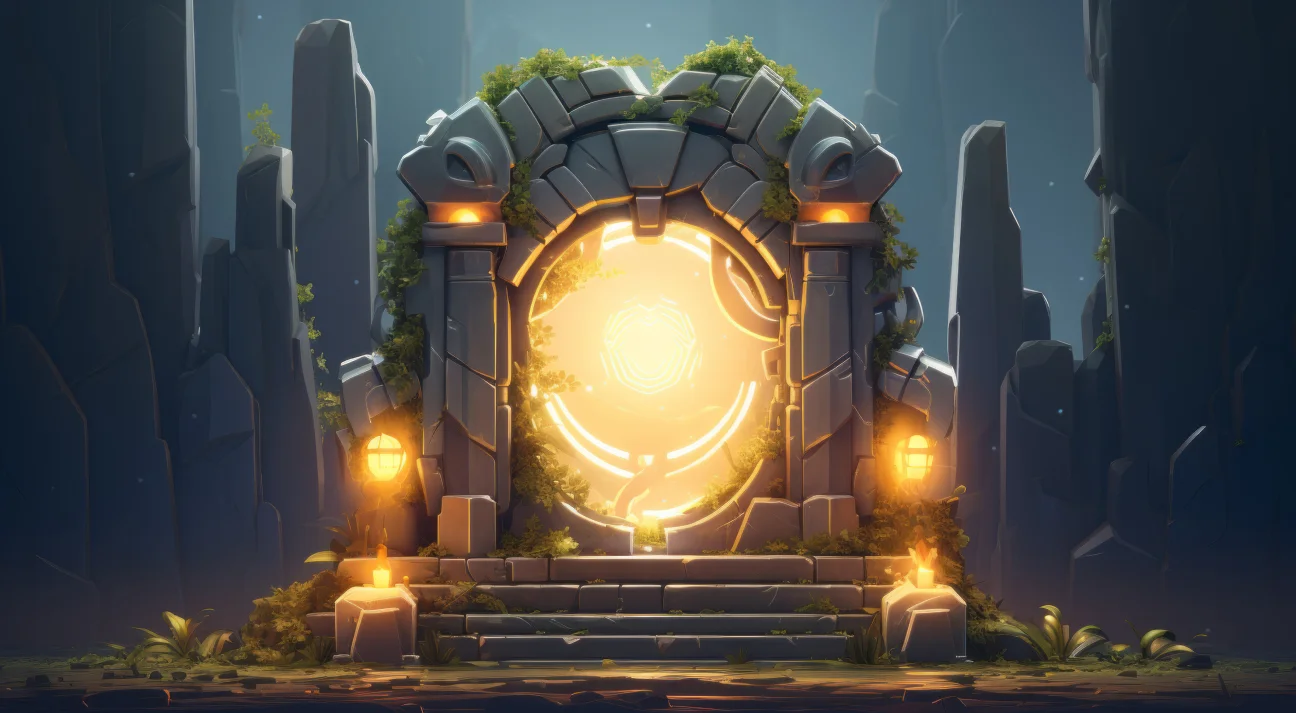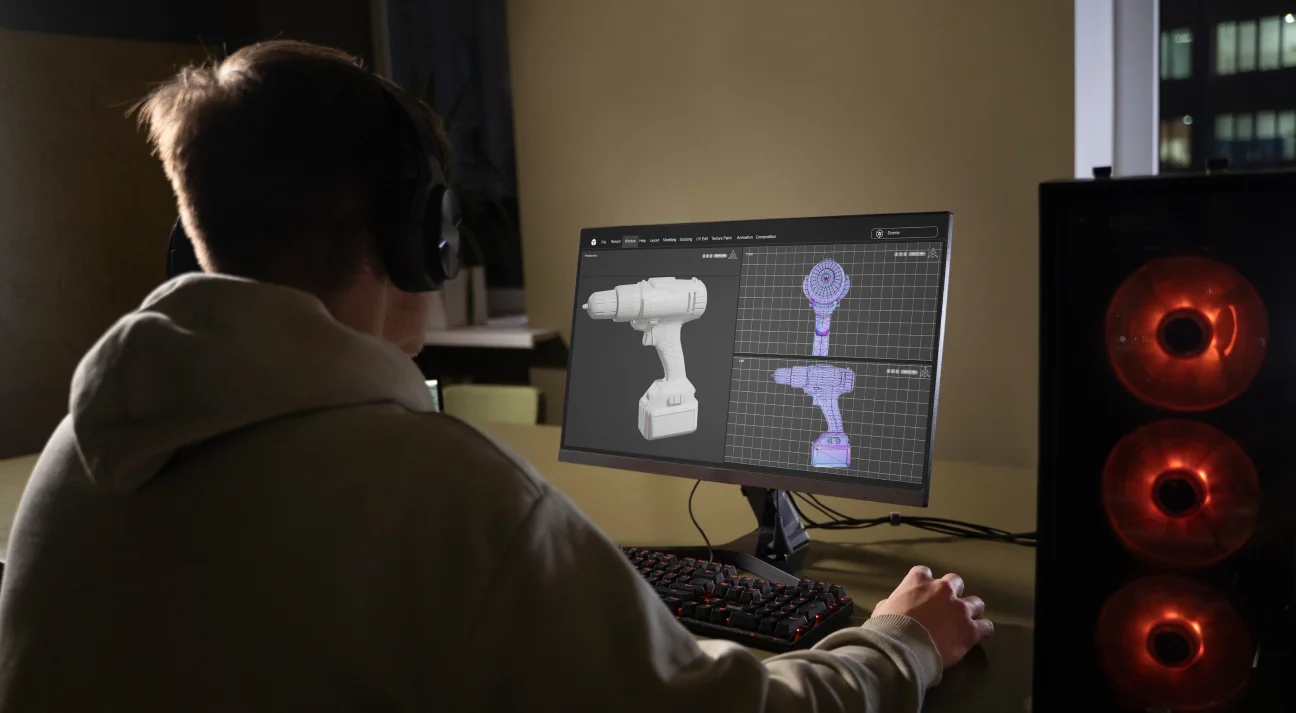
How Game Prototyping Can Make Your Game Successful?
Game prototyping functions as a testing ground for concepts, allowing developers to validate ideas before investing time and resources. Developers go for pen and paper or create prototypes digitally to enable experimentation with game mechanics and refine gameplay to achieve perfection. This blog highlights the significance of game prototyping and helps you learn best practices for creating one.
Game development is an exciting yet challenging journey. It resembles building a big Lego set. However, instead of using bricks, game developers use computer code, graphics, and creativity. But before building the final game, they prototype a game and iterate it to achieve perfection.
- So, what exactly is game prototyping?
- Why do developers use prototypes?
- How can prototypes make games better?
- How can you prototype a game?
Well, picture this: you’ve got this awesome idea for a game, but before you start slaving away at coding and designing, wouldn’t it be nice to know if it’s actually fun? That’s where game prototyping comes into the picture to save your time, money, and resources. Apart from it, there is a lot more than what meets the eye.
This blog will uncover the hidden facts about game prototyping and tell you why it is important to have one. Stick to it until you find the information you are looking for.
What is Game Prototyping?
Game prototyping is the process of creating an early version of your game to test out concepts and mechanics. It’s like a sketch that helps you see if your ideas will work in the final product. By using prototypes, you can experiment, find problems, and make improvements before committing to full-scale development.
Different Types of Game Prototype
Game developers can create various types of prototypes to explore different aspects of their game ideas and test specific mechanics or concepts. Here are some common types of game prototypes:
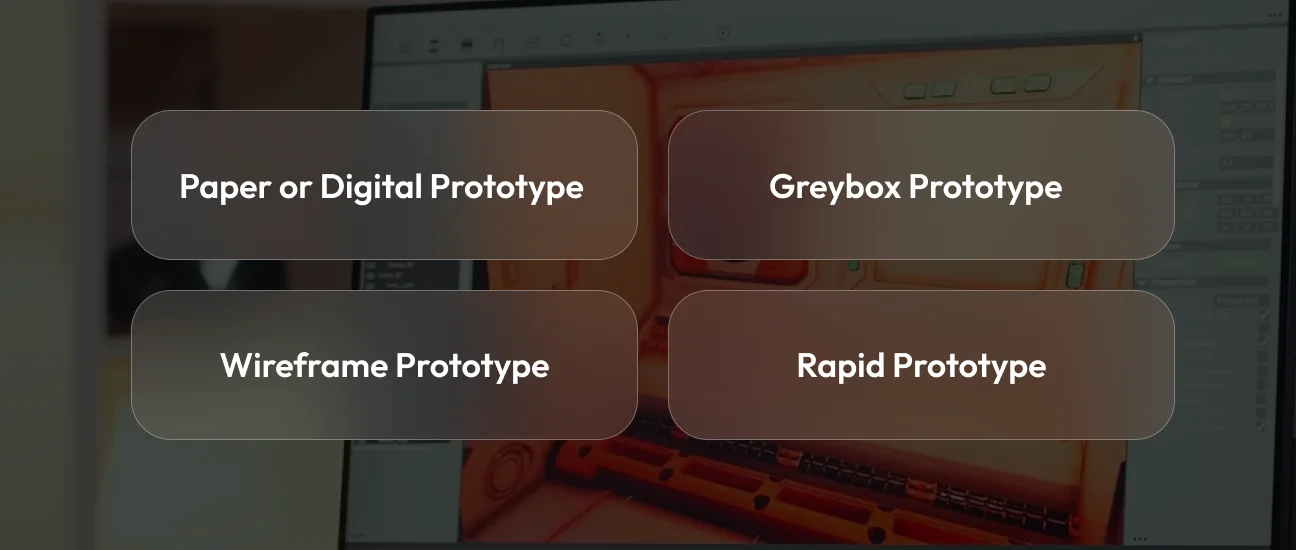
Paper or Digital Prototype
Paper prototypes are physical representations created using simple materials like paper, cardboard, and markers. Developers prototype a game on paper to test and iterate game mechanics, rules, and overall flow. They draw their sketches on paper to conceptualize the initial game design and stages. The prototype helps them visualize concepts, playtest interactions, and rules.
Contrary to this, digital prototypes are early versions of a game developed using software tools to simulate gameplay on digital platforms. Developers use digital prototypes in later stages of development after the initial concepts have been validated through paper prototypes, focusing on refining gameplay, graphics, and technical aspects.
Wireframe Prototype
Wireframe prototypes usually focus on the game’s interface and layout and help developers work on structure and functionality rather than detailed design. To create these prototypes, developers use simple shapes and lines to outline the placement of key elements, including menus, buttons, and game objects, giving a skeletal view of the game’s user interface and interaction flow.
Wireframe prototyping maps out the user experience and ensures seamless navigation and functionality that align with design goals.
Greybox Prototype
A greybox game prototype is an early version of a game that focuses on testing and improving gameplay mechanics, game level design, and overall functionality without incorporating final art assets or detailed visual elements.
Game-level design studios use simple geometric shapes and placeholder graphics to represent characters, environments, and objects. These prototypes can be either 2D or 3D, depending on the nature of the game being developed and the tools available to the development team.
In a 3D greybox prototype, simple geometric shapes are used to represent three-dimensional objects and environment modeling within the game. While 2D prototypes are more common for certain types of games, such as side-scrolling platformers or puzzle games.
Rapid Prototype
Rapid prototyping design encompasses paper, wireframe, and greybox prototypes. Developers can rapidly create multiple game prototypes within a short period. In rapid prototyping, different iterations can be quickly created to refine an existing game idea or explore completely new concepts. The prototype emphasizes swift improvements and experimentation, facilitating accurate iterations in minimum attempts.
Why Game Prototyping is Important for Game Development?
According to a survey by the International Game Developers Association (IGDA), 68% of game makers think creating game prototypes is crucial for their projects.
Another study by GameAnalytics found that games that went through prototyping kept 35% more players interested compared to those that didn’t.
In a report from the Game Developer’s Conference (GDC), 80% of developers said early prototypes helped them find and fix problems with their game designs.
Hence, game prototyping is a crucial step in the game development process, enabling developers to create better games that resonate with players. It has countless benefits and the most prominent ones are mentioned below:
Idea Validation
Developers can test and validate game concepts quickly. They can determine whether the core mechanics and ideas are fun, engaging, and feasible before using extensive resources for development.
If the game involves shooting mechanics, the prototype might focus solely on creating shooting mechanics and testing its feel and responsiveness. Hence, developers can gauge whether the mechanics are enjoyable, intuitive, and aligned or not.
Risk Reduction
Prototypes can uncover technical limitations or bugs that might not be apparent in the conceptual phase. For example, a particular game mechanic might be too resource-intensive for the target platform, or there might be unforeseen difficulties in integrating certain technologies.
They can also reveal design flows and mechanics that are not as fun or engaging as anticipated. Prototypes uncover pacing issues or elements that are too complex or confusing for players. Developers can fix these problems at an early stage and avoid the post launching risk.
Efficient Resource Allocation
Developers can use prototypes to do quick experimentation with different game mechanics and concepts. If an idea does not work, they can discard or modify it without wasting much time.
Moreover, successful prototypes help developers decide how much effort and resources to allocate to different parts of the game. Successful prototypes might warrant additional investment, while less promising ones might be scaled back or revised.
Creativity and Innovation
Prototyping provides a safe space for experimentation. Developers can try out bold, unconventional ideas without the fear of failure. In a prototype, it’s okay if an idea doesn’t work. Developers can try out new concepts that might be too risky for full development and see if it works for them or not. So, you can work on many concepts, bring your creative sides out, and innovate the best game.
Technical Validation
Prototyping provides a proof of concept for key mechanics, demonstrating effective implications. Developers can see how different systems interact and ensure that they work together seamlessly, identifying any integration issues early. Early detection of bugs allows developers to fix them before they are embedded deeply into the game’s codebase, saving time and resources.
Market Testing
Developers can present the concept in front of the target audience and determine if they have a genuine interest in the game concept or not. Positive responses can indicate that the game has potential, while lukewarm or negative feedback can signal the need for changes.
They can learn what aspects of the game resonate with players and know which mechanics, themes, and styles are most appealing to the target audience.
Better Decision-Making
If market testing reveals that certain aspects of the game are not well-received, developers can pivot or refine the game concept before investing heavily in full development. This flexibility is crucial for aligning the game with market demands.
Based on player feedback, developers can prioritize the development of features and mechanics that are most appreciated by the audience, ensuring that resources are focused on the most impactful areas.

How to Create a Game Prototype?
Game prototype design involves several key steps to effectively translate your ideas into a playable demonstration of your game concept. Here’s the step-by-step process to prototyping the game concept.
1. Outline Core Game Concepts
To start with, decide what type of game you want to develop, such as action, adventure, puzzle, or strategy. It will help you and your team understand the general feel and style of the game.
Think about the setting and focus on the storytelling of your game. Is it set in space, a medieval kingdom, or a fantasy world? What do players need to do to win or progress in your game? Identify the core mechanics, obstacles, and challenges players will face.
2. Pick the Right Prototype
Choosing the right prototyping method is a step you can’t miss. Prototype type determines how you will build and test your game ideas quickly. It would be better if you start with a paper prototype and finalize the concept of it. Now, build a wireframe prototype and move to the next type if your game requires it.
You can efficiently develop and test your game ideas, making it easier to identify what works and what needs improvement. This step is crucial for making sure you’re on the right track before investing more time and resources into your game.
3. Gather Necessary Tools and Resources
You would need basic tools to create paper prototypes. Meanwhile, to create digital prototypes, you need to use software like Unity, Unreal Engine, Construct, GameMaker Studio, etc. If you’re making wireframes or greybox prototypes, you might also need design software like Sketch, Figma, or Adobe XD.
You might need placeholder graphics, sounds, and other assets to use in your prototype. These don’t need to be final versions; they’re just to give an idea of what the game will look and sound like.
4. Build the Initial Version
Now it’s time to build your game prototype. The step involves turning your ideas into a basic, playable game version. Here’s how to do it, depending on the type of prototype you’re making:
Paper Prototype
Draw or cut out game elements like boards, cards, or pieces using paper and markers. Arrange these elements to simulate the gameplay. For example, you can draw a game board and move paper pieces around to test game mechanics and rules.
Wireframe Prototype
Use design tools (like Sketch, Figma, or Adobe XD) to create simple outlines of your game’s screens. These outlines should show the layout and navigation without detailed graphics. Connect these wireframes to demonstrate how players move through the game and interact with different elements. It will help you plan the user interface and flow.
Greybox Prototype
Use the game engine to create simple geometric shapes to represent game elements. For example, use cubes for game character design, and other assets. Implement basic controls for player actions. For example, program the character to move, jump, or interact with objects.
Use your sketches to build levels using simple shapes. Arrange these shapes to create pathways, obstacles, and interactive elements. Add the core gameplay mechanics you outlined earlier. Make sure they work correctly and feel good to play.
5. Playtest and Refine the Prototype
Conduct playtesting sessions with team members or target users. Gather feedback on the gameplay experience, mechanics, and overall enjoyment. Identify issues, bottlenecks, and areas for improvement.
Now, modify the prototype based on feedback, focusing on refining core mechanics and resolving issues. Iterate through multiple versions, continuously improving and polishing the gameplay.
6. Prepare for Further Process
Decide whether the prototype is ready to move to a more detailed development phase or if additional prototyping is needed. Outline a roadmap for the next stages of development, including detailed design, asset creation, and coding.
Tips to Follow While Developing Game Prototypes
Here are some top tips for creating game prototypes that may help you avoid blunders.
- Start with basic mechanics and test core gameplay ideas without getting bogged down in details.
- Prioritize fun and engagement over graphics or polish. Make sure the game feels enjoyable to play even in its earliest stages.
- Don’t be afraid to make changes based on feedback. The faster you iterate, the sooner you’ll find what works best.
- Get feedback from players as often as possible to identify strengths and weaknesses at an early stage.
- Define what you want to learn or achieve with each prototype to stay focused and measure progress effectively.
- Don’t spend too much time on artwork or sound at this stage. Placeholder assets are fine as long as they convey the necessary information.
By following a structured approach, from conceptualizing your game and defining its key features to building a basic playable version, you can effectively bring your vision to life. Remember, the primary goal of a prototype is not to create a polished product but to experiment and explore what makes your game fun and engaging.
Embrace the iterative nature of prototyping: playtest often, stay open to feedback, and be prepared to make changes. To create these prototypes and execute the game development process with precision, you must hire game designers from a reliable game development company.
Why is 300Mind the Best Choice for Game Design Prototyping and Development?
300Mind stands out as the optimal choice to avail of game prototyping and development services. Our developers have extensive experience across various genres and platforms, consistently transforming diverse game ideas into successful projects.
We offer a comprehensive suite of services, covering everything from initial concept development to final product delivery. Our end-to-end game development services includes, prototyping, development, testing, and post-launch support, ensuring consistency and high-quality results throughout the entire development process.
We employ advanced graphics engines, AI-driven game mechanics, and seamless cross-platform integration to build games that meet and exceed industry standards. Our commitment to perfection and technologies ensures that your game will be built on a robust and innovative technical foundation.
FAQ on Game Prototyping
Game design prototyping utilizes a variety of software and tools to create and test game concepts quickly. These tools and software include Unity, Unreal Engine, Blender, Autodesk Maya, Construct, GameMaker Studio, etc.
A game prototype typically looks like a simplified, rough version of the final game, focusing primarily on core gameplay mechanics rather than polished graphics or complete content. It may feature basic, placeholder graphics and minimalistic environments, with simple character models and limited animations.
A successful prototype captures the essence of the game vision while remaining flexible enough to iterate upon based on feedback and further testing. It must align with the project’s goals, whether they be commercial viability, innovation, or artistic expression. The success of a prototype lies in its ability to inform and guide the development process, leading to the creation of a compelling and enjoyable final product.
